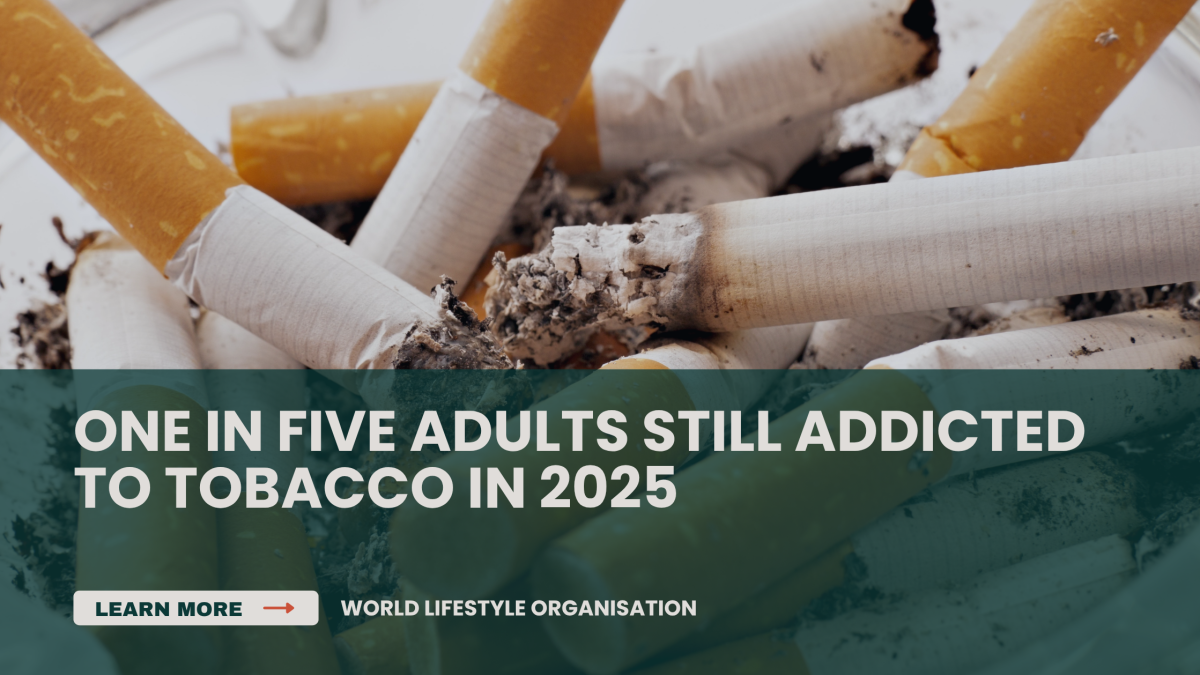One in five adults still addicted to tobacco in 2025

WHO’s latest tobacco trends report shows that despite progress, about 1 in 5 adults globally remain addicted to tobacco. The rise of e-cigarettes amon
Key Facts
- Approximately 1.2 billion adults worldwide use tobacco, equal to about one in five people. Financial Times, Reuters
- WHO estimates at least 86 million adults and 15 million children (ages 13–15) use e-cigarettes globally. Financial Times
- In regions like Europe, the prevalence of adult tobacco use in 2022 was ~25.3% (down from 34.4% in 2000).
- Tobacco kills more than 8 million people per year globally. Wikipedia
Why does this new WHO data matter?
Because it shows that tobacco addiction is still pervasive, even as the world makes measurable progress. And because emerging products like e-cigarettes may be undermining that progress by drawing in younger generations. The report renews urgency for stronger policies, more support for quitting, and protection of young people.
What are the main trends in tobacco and nicotine product use?
1. Smoking is declining — but slowly
Since 2000, global tobacco use has dropped from about 1.38 billion users to ~1.2 billion today. Financial Times That means prevalence has shifted from roughly one in three adults to one in five. Some countries have made good gains (e.g. via strong tobacco control policies), but many lag behind.
2. E-cigarettes and new nicotine products are rising
WHO now gives its first global estimates for vaping: at least 86 million adults and 15 million young adolescents use e-cigarettes. Financial Times In many places, children are on average nine times more likely to vape than adults, where data allow this comparison. Financial Times The concern: these products may act as a “gateway” to long-term nicotine dependence rather than purely as harm-reduction tools.
3. Uneven progress across regions and populations
In Europe, tobacco use dropped from 34.4% (2000) to 25.3% (2022). Women’s prevalence is falling more slowly than men’s in many regions. Some countries are projected to still have high prevalence by 2030 if current pace holds.
What challenges are emerging?
- Industry pivoting to new products: As cigarette sales decline, tobacco companies increasingly promote e-cigarettes, nicotine pouches, heated tobacco — often with youth-oriented marketing strategies.
- Regulation lags behind innovation: Many countries have yet to establish strong laws or enforcement for novel products.
- Addiction remains – quitting is hard: Nicotine dependence is a chronic, relapsing condition.
- Unequal access to help: In many places, cessation services (counseling, medications) are limited or unaffordable.
What can be done?
Strengthen and expand proven tobacco control policies
Governments should fully adopt the MPOWER package (monitoring, protecting, offering help, warning, enforcing bans, raising taxes).
They should also ensure regulation covers all nicotine and tobacco products, not just cigarettes.
Boost cessation support
Making counseling and pharmacotherapy more accessible and affordable is key.
Special attention must go to vulnerable groups who face greater barriers (low income, mental health, marginalized communities).
Protect youth and prevent initiation
Strict limits on marketing, flavor bans, age-of-sale laws, and enforcement must apply to e-cigarettes and related products.
Public education campaigns can build awareness of addiction risks, especially in younger audiences.
Monitor, research, and adapt
Countries must collect data on all forms of nicotine use (smoked and non-smoked) to guide policies.
WHO and partners should continuously evaluate the health effects of newer products and share guidance.
What is the WLO message?
We applaud the progress made, but we cannot rest. One in five adults still struggles with tobacco dependence. The mean age at first use is creeping lower, as new products threaten to restore addiction in new populations. The fight is evolving — and so must our strategies.
Together, we must
- Demand bold, comprehensive regulation
- Expand equitable access to quitting support
- Prioritize youth protection
- Ensure data and research keep pace
By renewing our commitment — at both personal and policy levels — we can accelerate the end of the tobacco epidemic.
👉 If you believe in a healthier, smoke-free future, subscribe to the WLO newsletter for practical tips, policy updates, and stories from the front lines of prevention.
Categories: : Lifestyle, Worldwide Health
 Dylan | World Lifestyle Organisation
Dylan | World Lifestyle Organisation 